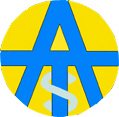
Electronic mail (e-mail, or email) is a way of sending and receiving letters electronically. As well, you can send and receive documents and pictures, and virtually any other computer file that is fairly small. The main use is for correspondence and sending/receiving pictures. In addition you can also forward emails you have received.
Here is a look at Microsoft's Outlook Express. This is one of the most common email programs, as it comes along with Windows.
Outlook Express Main Screen - This is the first screen you will see when you open Outlook Express. On the left you see the different folders that keep your email organized.
When you click on the Attach button, a window will open that lets you search your computer for the file(s) that you want to attach. In general it will open the "My Documents" folder first. You can use the "Look in:" box at the top of the windows to choose a different location. Once you have found the file you want to attach, click on it to highlight it and then click the Attach button near the bottom of the window. If you want to attach another file, repeat the process.
You will see similar folders listed at the left of the screen. In this case there are additional user folders because email from multiple addresses is accessible in this case. The top list has the general mail, and down below is where email for my ATS account is put.
You will note that some of the folder names are different, Trash instead of Deleted Items and Sent instead of Sent Items. There is no difference in how these folders work compared to the above descriptions. However, in terms of the Trash folder, Yahoo! Automatically deletes messages older than 30 days.
There is also an additional folder that is not present in Outlook Express, the Bulk folder. This folder stores email messages that are considered spam, not the luncheon meat, by Yahoo!. This Yahoo! thinks these are messages that you do not want, generally these are advertisements and newsletters, and other types of bulk email. If you notice that there are messages in the Bulk folder that are not spam, or messages in your Inbox that are, you can mark these messages accordingly. This helps Yahoo! better check your messages for spam.
You will note that again there are similarities between this Compose screen and the Outlook Express New Message window. There is a To, CC, and Subject, line, a Body section, and in this case the Bcc line is also visible. These all act in the same manner as in Outlook Express. You can see that the To, CC, and Bcc text are blue and underlined. This means that they are "hyperlinks" (links). In this case if you click on one of them it will open your Yahoo! Address Book so that you can choose from the email addresses you have stored there. This is possible with Outlook Express as well.
In this case since there are multiple email addresses that are accessible here, there is an option of which address to send the email from. With a regular Yahoo! Mail account this choice will not be there. Above the From line there are some buttons. Familiar are the Send, Spell Check, and Save as Draft. These all work in the same fashion as Outlook Express. The Cancel button will cancel the message and return you to the main screen or Inbox, depending on what your previous screen was.
There are a few other differences between Outlook Express and Yahoo! Mail. Below the Body section there are some check boxes. The first selects to include a "signature". A signature is a section of text that generally contains name and contact information. These are generally used in a business situation. The next check box is Allow HTML tags, unless you have designed WebPages you don't need to be concerned about this. It is just a way to include Web formatting, but you need to know HTML coding to use this. Next we see the Save a copy check box. Since this is Web based email, all of your email and settings are stored on Yahoo! and take up there space. As a result, Yahoo! limits the amount of space you can use, and sent messages take up that space. However, messages in your Trash and Bulk folders do not count towards your allocated space. The next check box is used if you have a Yahoo! PayDirect account to send money through email.
To attach files, instead of clicking the Attach button as with Outlook Express, there is a link between the Subject line and Body section.
Since this is Web based, there is a slight difference in attaching files to your email. After clicking on the Attach link, this screen opens. To attach a file click you have two options. First, if you know exactly where the file is on your computer, you can type it into one of the boxes. Since this is fairly unlikely, the better option is to click on one of the Browse buttons to the right of the boxes. This will open a window like the one used to select the file in Outlook Express, simply find the file, but in this case you will click on the "select" or "open" button instead of attach.
Once the file is selected, the location will be listed in the respective box. If you want to attach another file, select an unused box/browse button and repeat. When you are done selecting your file(s), click on the Attach Files button near the bottom. This will attach your file(s) and return you to the compose screen.